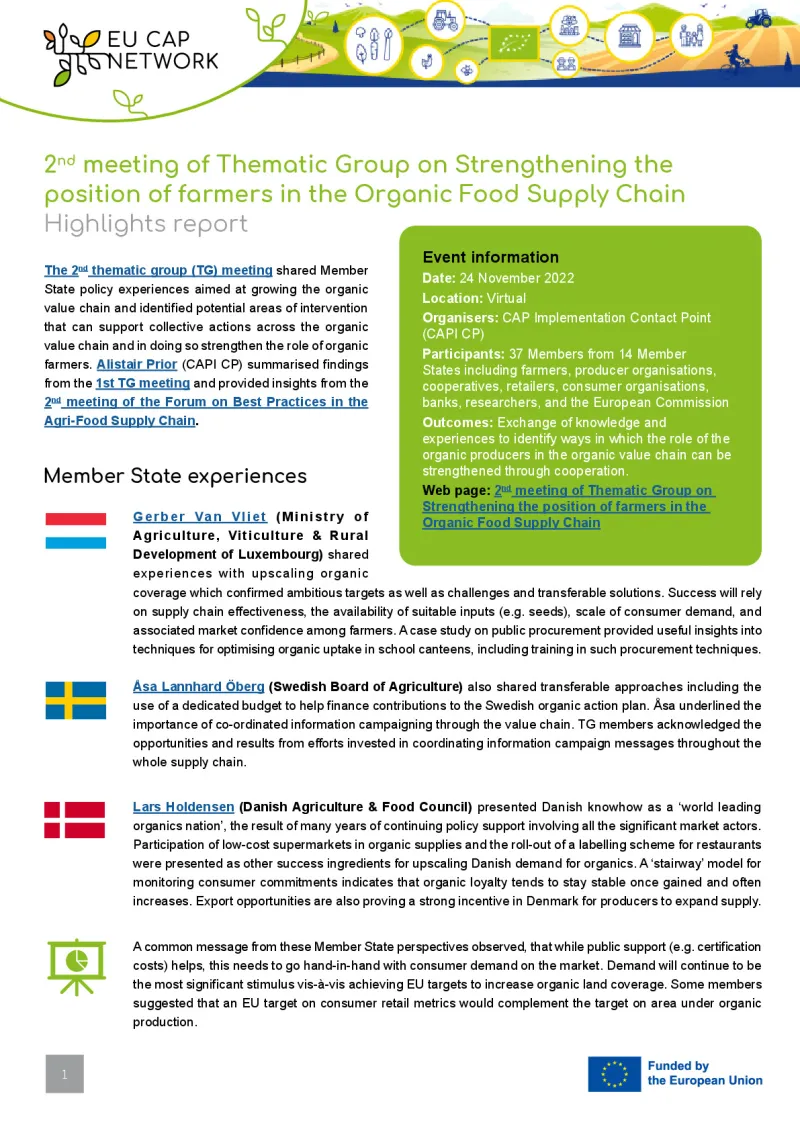Landscape Features and Biodiversity

The farmed landscape has a large role to play in conserving and restoring biodiversity levels across Europe. Toward this objective, the Biodiversity Strategy 2030 set a target for 10% of agricultural land to incorporate landscape features or non-productive areas. Under the proposed Nature Restoration Regulation, landscape features include ‘buffer strips, rotational or non-rotational fallow land, hedgerows, individual or groups of trees, tree rows, field margins, patches, ditches, streams, small wetlands, terraces, cairns, stonewalls, small ponds and cultural features’. The CAP Strategic Plans will be a key tool to promote the creation and improved maintenance of landscape features in agricultural landscapes.
This Thematic Group (TG) provided an opportunity to bring Member State representatives and stakeholders together to discuss how to encourage improved diversity, coverage, connectivity and condition of landscape features within the farmed environment. In this context, the TG on Landscape Features and Biodiversity focused on the following objectives:
- explore how landscape features may be protected, maintained, created and restored using a range of CAP interventions within different MS;
- identify ways in which farmers may be encouraged to see landscape features as adding value to their operations and overcome barriers / challenges to uptake; and
- share experiences as to how MS have supported landscape features’ retention and creation in the past and how better data and targeted support may lessen habitat fragmentation and increase biodiversity.
The TG consisted of a small but dedicated cross-section of informed and engaged stakeholders from across Europe (around 40 in total) who committed to participating in two meetings and related activities in between the meetings. Please find the TG members list.
If you have any question, please contact us at implementation@eucapnetwork.eu.
You can find useful resources about this theme further down in this page and in our Publications section.




